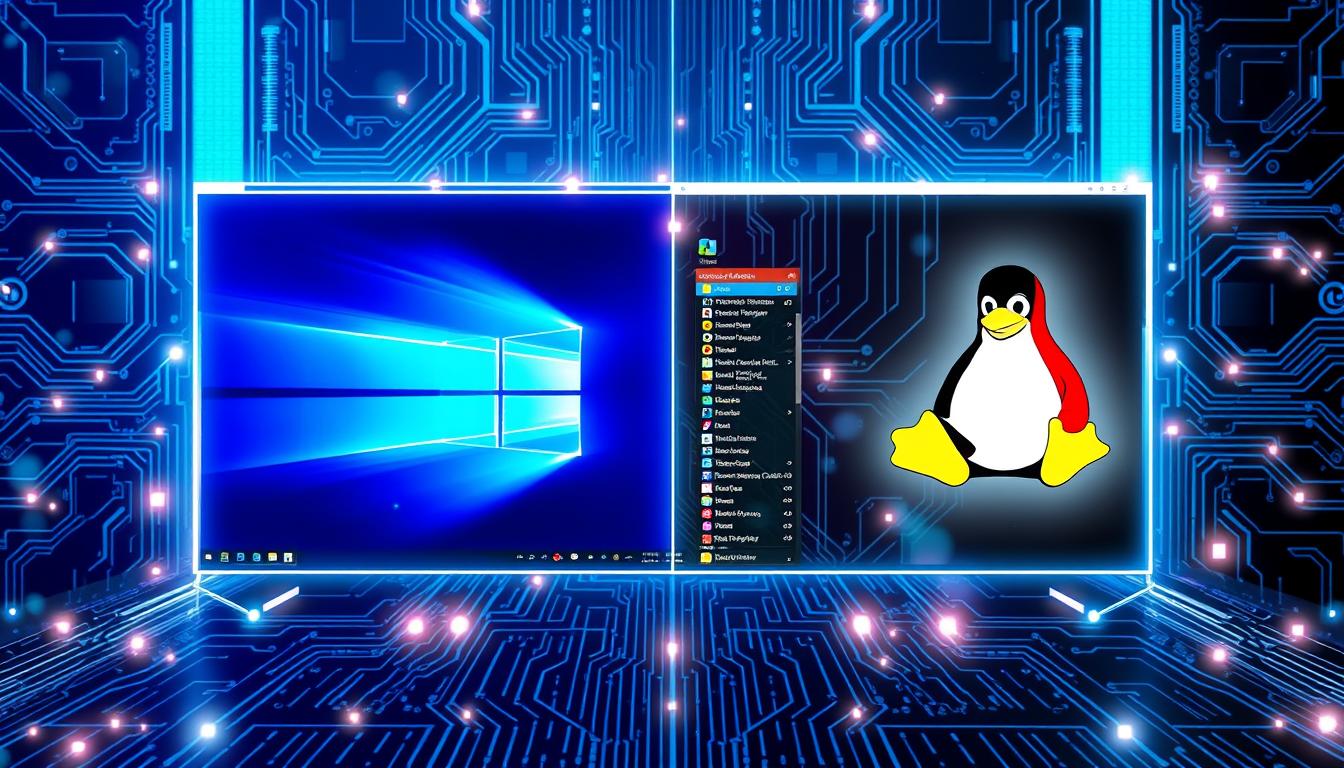Understanding Disk Partitioning: An Overview of Gparted for Linux Users
Disk partitioning is a crucial aspect of managing storage on a Linux system. It involves dividing the hard drive into multiple sections called partitions, which can be individually formatted and utilized for different purposes. This division allows users to efficiently organize their data and install different operating systems on the same machine. Gparted, short for GNU Partition Editor, is a popular tool among Linux users for managing disk partitions.
Gparted offers a user-friendly interface that allows users to view, create, resize, and delete partitions effortlessly. It supports a wide range of file systems, including ext2, ext3, ext4, NTFS, and FAT32, making it a versatile option for individuals with diverse requirements. Moreover, Gparted enables users to perform advanced operations like moving partitions, aligning them to optimize performance, and modifying the properties of file systems. Whether you want to resize your partitions to reclaim unused space or create new partitions for specific purposes, Gparted provides a powerful and intuitive solution.
The Importance of Disk Management: How Gparted Enhances Linux Performance
When it comes to maximizing the performance of a Linux system, disk management plays a crucial role. By ensuring that the disk partitions are properly organized and optimized, users can experience faster boot times, improved file access speeds, and overall system responsiveness. This is where Gparted, a powerful disk partitioning tool for Linux, comes into the picture.
One of the key ways in which Gparted enhances Linux performance is by allowing users to create and resize partitions with ease. With Gparted, you can easily allocate the right amount of space for your root, home, and swap partitions, ensuring that each partition has sufficient room to function optimally. Additionally, Gparted enables users to resize partitions without the need to reinstall the entire operating system, making it a valuable tool for managing disk space on the fly. By efficiently managing disk partitions using Gparted, Linux users can ensure that their system runs smoothly and efficiently, with minimal slowdowns or bottlenecks.
Getting Started with Gparted: Installation and Setup Guide for Linux
Once you’ve made the decision to use Gparted for disk partitioning on your Linux system, the first step is to install and set it up properly. To begin, ensure that you have administrative privileges on your system. This will allow you to execute the necessary commands and make modifications to the disk partitions. Once you have verified your privileges, the next step is to open a terminal window. In the terminal, you can use the package manager specific to your Linux distribution to install Gparted. For example, on Ubuntu-based distributions, you can use the apt-get command to install Gparted. Simply type “sudo apt-get install gparted” and press Enter. The package manager will download and install Gparted, along with any required dependencies.
Navigating the Gparted Interface: A Step-by-Step Walkthrough
When it comes to partitioning disks on a Linux system, Gparted is a widely used tool that offers a user-friendly interface for managing partitions. Upon launching Gparted, users are greeted with a simple and intuitive layout. The main window displays a list of all connected disks, and by selecting a specific disk, users can view its partitions as well.
To delve deeper into a particular disk or partition, users can right-click on it and access various options. For instance, selecting the “Information” option provides detailed information about the selected disk or partition, including its size, file system type, and mount point. Additionally, the “Unmount” option enables users to unmount a partition before making any changes, ensuring that no data is being actively accessed or modified.
Within the Gparted interface, users can easily navigate through different sections, each offering specific functionalities. The toolbar located at the top of the window provides quick access to essential actions such as creating, deleting, resizing, and moving partitions. Moreover, a horizontal bar displays the progress of ongoing operations, allowing users to monitor the status of partition modifications in real-time.
Overall, navigating the Gparted interface is a streamlined process that presents users with a clear and concise overview of their disks and partitions. With its straightforward layout and comprehensive options, Gparted simplifies the process of managing disk partitions for Linux users.
Partitioning Basics: Creating, Resizing, and Deleting Partitions using Gparted
Partitioning is an essential process in managing disk space on Linux systems, and Gparted is a powerful tool that simplifies this task. With Gparted, creating new partitions becomes effortless. Users can specify the size and file system type for each partition, ensuring that the disk space is efficiently utilized. Additionally, resizing partitions is made convenient with Gparted’s intuitive interface. Whether it’s expanding a partition to accommodate more data or shrinking it to make room for a new one, Gparted makes the process seamless and error-free.
In addition to creating and resizing partitions, Gparted also allows users to delete partitions when they are no longer needed. By deleting partitions, users can free up disk space for other purposes or to create new partitions. Gparted ensures that the deletion process is quick and straightforward, eliminating the need for cumbersome manual operations. Whether you need to create, resize, or delete partitions, Gparted provides a reliable and user-friendly solution for managing disk space in your Linux system.
Advanced Partitioning Techniques: Managing File Systems and Mount Points in Gparted
Advanced partitioning techniques in Gparted allow Linux users to effectively manage file systems and mount points. When creating a partition in Gparted, users have the flexibility to choose from various file systems like ext4, NTFS, or FAT32, depending on their requirements. Each file system has its own advantages and limitations, so it is essential to select the most suitable one based on factors such as compatibility, data security, and performance. Gparted simplifies this process by providing an intuitive interface that allows users to easily create, format, and label partitions with their desired file system.
Once the partitions are created, Gparted enables users to manage mount points, which determine how the partitions are accessed and utilized by the operating system. In Gparted, users can assign mount points to specific partitions, allowing for seamless integration into the Linux file hierarchy. Mount points can be set to default paths such as /home, /var, or /tmp, ensuring efficient utilization of disk space and optimizing system performance. Gparted’s ability to manage both file systems and mount points gives users the control and flexibility needed to tailor their Linux system to their specific needs and preferences.
Safeguarding Your Data: Backup and Restore Strategies with Gparted in Linux
Backing up data is a crucial part of ensuring the safety and security of your valuable files. With Gparted in Linux, you have access to a reliable and efficient tool for creating backups and restoring them when needed. By following a few simple strategies, you can safeguard your data and minimize the risk of data loss.
One of the key backup strategies in Gparted is creating regular full system backups. This involves creating a complete snapshot of your entire system, including all partitions and files. By doing so, you can easily restore your system to a previous state in case of any unforeseen issues or data corruption. Additionally, Gparted allows you to schedule automatic backups, ensuring that you always have an updated backup version available. Remember to store your backups on a separate drive or cloud storage to protect against hardware failures or physical damage.
Troubleshooting Common Issues: Tips and Tricks for Using Gparted in Linux
One common issue that users may encounter when using Gparted in Linux is the inability to resize or manipulate certain partitions. This can be due to various reasons such as file system errors, incompatible partition types, or insufficient disk space. To troubleshoot this issue, users can first ensure that the file systems on the partitions are functioning properly by running the appropriate file system repair commands, such as fsck for ext2, ext3, or ext4 file systems. Additionally, checking for any errors using the SMART diagnostics tool can help identify any physical issues with the disk that may be preventing proper partition manipulation.
Another common issue that can arise when using Gparted in Linux is accidental deletion or corruption of partitions. This can happen when users mistakenly select the wrong partition or encounter an unexpected interruption during the partitioning process. To address this issue, it is crucial to have a recent backup of all important data before making any changes to the disk. In the event of unintentional partition deletion or corruption, users can utilize Gparted’s undo feature to revert the changes made. However, it is important to note that this feature is only available if the actions performed in Gparted are reversible. In cases where the undo feature is not available, users will need to rely on their backups to restore lost data.
Optimizing Disk Space: Compact and Defragment Partitions with Gparted
As the usage of a computer system continues over time, it is not uncommon for the available disk space to become fragmented and inefficient. This can lead to slower performance and reduced overall system functionality. To address this issue, Gparted offers a straightforward solution that allows Linux users to optimize their disk space by compacting and defragmenting partitions.
Compact and defragment partitions are critical steps in maximizing the available storage capacity of a system. By compacting partitions, unused space is consolidated and made available for efficient usage. Additionally, defragmenting partitions helps to arrange the data in contiguous blocks, minimizing the time required for the system to access and retrieve files. Gparted simplifies this process by providing easy-to-use tools that allow users to perform these operations with a few simple clicks. Whether you are looking to free up storage space or improve system performance, Gparted offers a reliable and user-friendly solution for optimizing your disk space in Linux.
Beyond Gparted: Exploring Alternative Partitioning Tools for Linux Systems
When it comes to disk partitioning on Linux systems, Gparted is often the go-to tool for many users. Its user-friendly interface and extensive features make it a popular choice. However, Gparted is not the only partitioning tool available for Linux. There are several alternative options that can also be explored to meet specific needs or preferences.
One such alternative is KDE Partition Manager. Designed specifically for the KDE desktop environment, this tool offers a comprehensive set of partitioning features. With an intuitive graphical interface, KDE Partition Manager allows users to easily create, resize, move, and delete partitions. It also supports various file systems, making it a versatile choice for Linux users.
Another noteworthy alternative is Parted Magic. This standalone Linux distribution is dedicated to disk partitioning and system maintenance. Parted Magic comes with a range of powerful tools, including Gparted, Clonezilla, and TestDisk, all wrapped in a user-friendly interface. Its wide array of features allows users to not only partition disks but also troubleshoot system issues, backup and restore data, and securely erase drives.








Leave a Reply